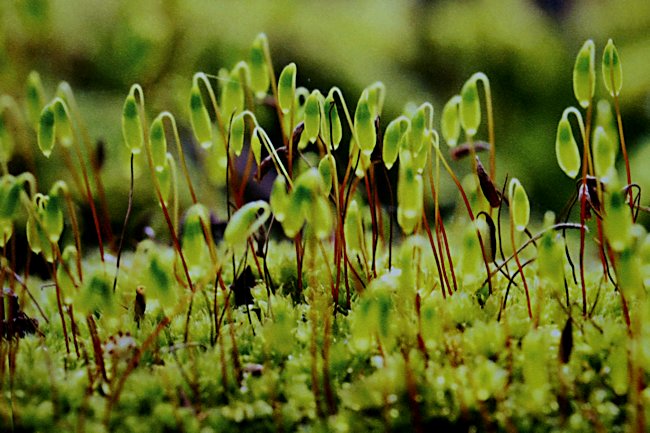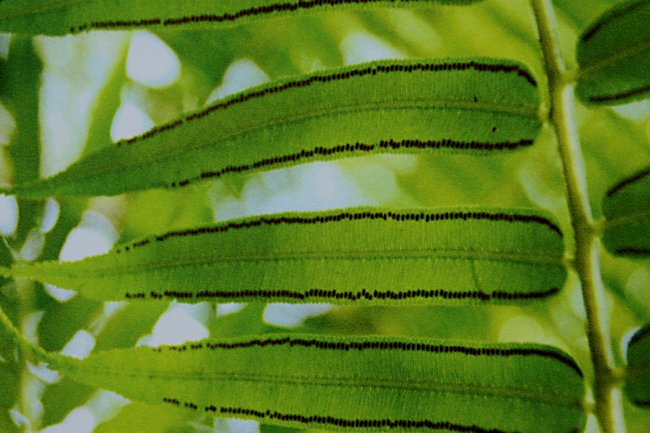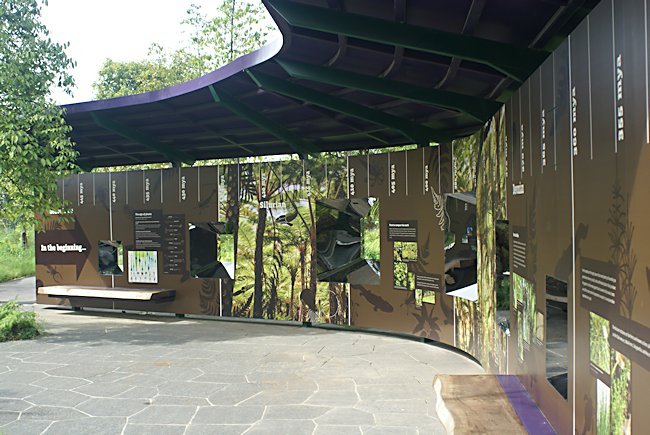The Discovery Garden Gardens by the Bay
The discovery garden in Singapore's Gardens by the Bay tries to explain to the visitor evolution plants. About 450 million years ago during the Ordovician period, plants start to conquer the Earth.

Around 350 million years ago during the late Devonian to the early Carboniferous period, Fern like plants with vascular systems take over the land. The first types of plants to bear seeds, date back to this period. During the Permian period around 300 million years ago, seed bearing plants called Gymnosperms diversifies into many different groups, such as Ginkgoaceace, cycads and conifers.
There are about 250 known species of cycads on earth, at present and more than 600 known species of conifers. During the Cretaceous period about 130 million years ago Angiosperms, or flowering plants started to appear. They evolved in parallel with the development of insect bio-diversity evolution.
First plants to conquer the Earth were mosses and liverworts. They are simple plants with no internal plumbing system to move water from roots to the leaves. If you look you will notice that their leaves are very thin and almost transparent. They need to be near abundant water supplies and humidity to survive and complete their reproductive cycle.
Plants are male or female and the sperm from the male plant needs water to swim to the female plant's ovule. The spores of these plants are produced on the stalks and are disbursed by water droplets.

With the development of ferns, plants were able to grow taller. These plants did have an internal plumbing known as a vascular system. Nutrients could be moved around all parts of the plant to encourage growth. Ferns reproduce from spores, but need plenty of humidity to germinate. Distant relatives of the firms are known as Fern Allies, such as the club mosses, wisk ferns, horsetales and Selaginellas.
Next development in the plant world was the Gymnosperms. This is a Greek word meaning naked seed. It means that the seeds were not enclosed in a fruit. Unlike mosses liverworts and ferns. These plants are able to complete their reproductive cycle without depending on water. Pollen is mainly transported by the wind and the seeds or even adapted to dispersal by animals or by the wind.
This group includes conifers, cycads, ginkos and gnetums. Most conifer species are found in the northern hemisphere forests. Only a few species are found in tropical rainforests. Now the reverse is true for cycads. Nearly all the 250 species of cycads are found in tropical rainforests. They have male and female cones and their seeds take over a year to ripen. Because of habitat destruction and over collecting many species are endangered.

Travel books

